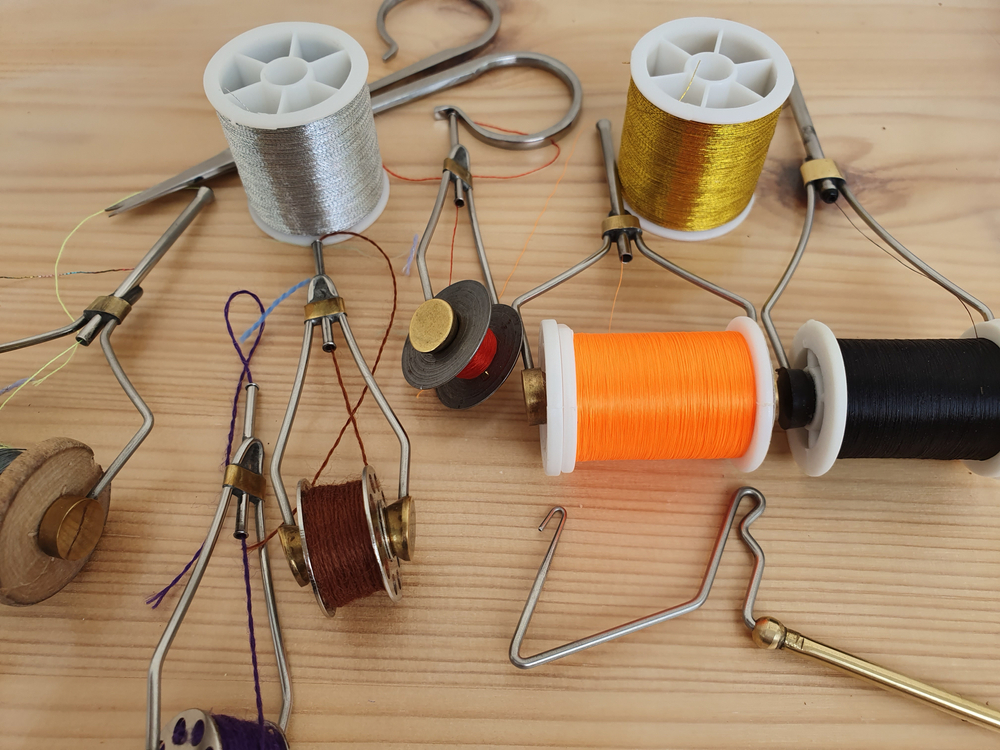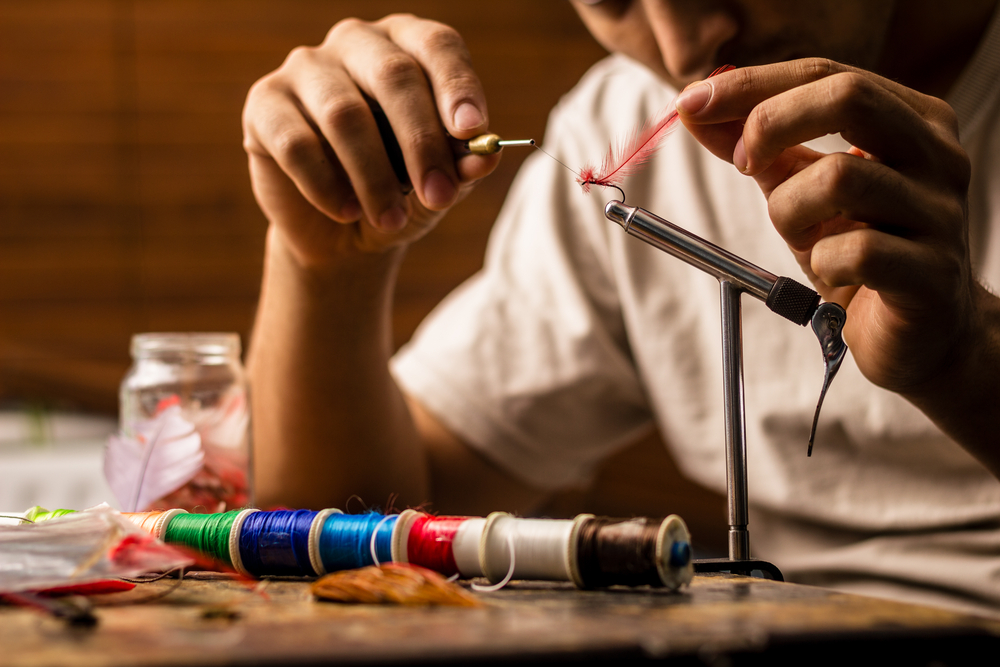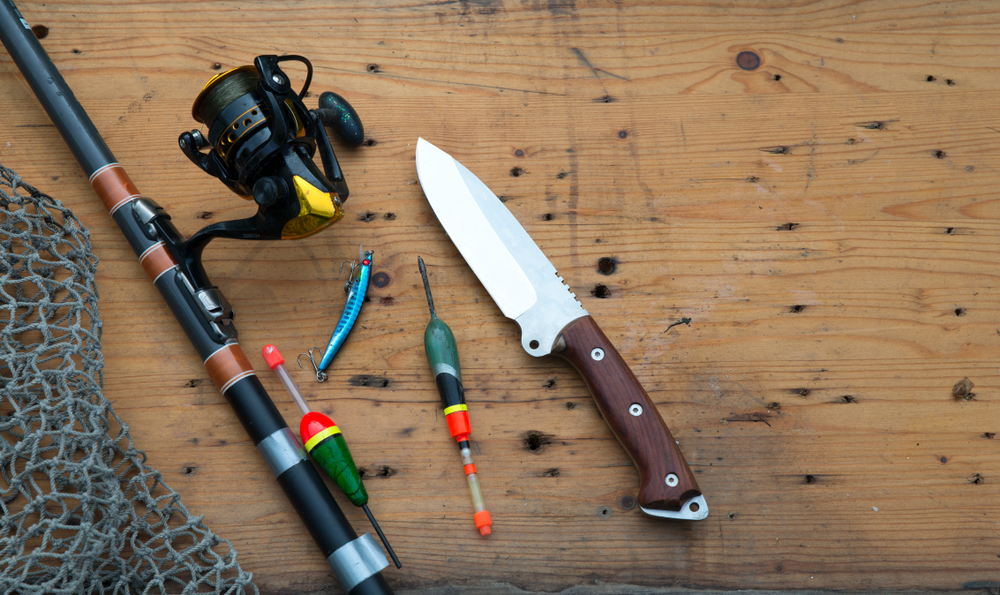Cleaning and repairing reels are important offseason chores for anglers.
During the colder months of the year, it can get a little tempting to put off fishing and pursue other recreational activities, preferably those indoors. Sure, cooler weather doesn’t stop everyone from heading out to fish, but there’s no denying that many anglers would rather wait for the warmer rays of summer sunshine before going out fishing.
When the winter weather is keeping you inside, or your favorite species is off limits to fishing, there are three great ways to still get your fishing fix:
While many anglers like to stock up on lures in the offseason, there’s no better time to pick up some new hobbies and truly take command of your fishing gear.
Lure Making

As important as it is to keep your gear organized, it may not be the most fun thing to do. Plus, it likely won’t satisfy your fishing fix all winter long.
These ready-to-paint Mud Hole minnow bodies have rattles built into them already.
If you’re game to try a new hobby in between fishing trips, and like do-it-yourself projects, then why not get into building your own fishing equipment?
You may find yourself with the idea for the perfect lure, but no company out there has exactly what you’re looking for. That’s when you should take matters into your own hands and build it yourself.
Mud Hole Custom Tackle offers everything from lure bodies and ready-to-paint jigs to skirt materials and spinner-bait blades. Many anglers already tweak lures to their liking, but by buying the materials yourself first, you can build it the way you envision without trying to alternate an already finished product.
For those who want even more control with their tackle, consider pouring the lures yourself, rather than buying premade lure bodies. Mud Hole sells melting pots and related equipment for building your lures from scratch.
Lure making can be a rewarding hobby for those who like hands-on projects.
Fly Tying

Tying flies is more than just a hobby to some – it’s an art. Whether you tie flies to actually fish with or not, there’s no doubting the appeal for fly tying if you have the time and patience.
In its basic definition, fly tying is simply a matter of binding materials to a hook with thread. Of course it’s more complicated than that, otherwise everyone would be doing it.
Essential tools include: magnifying glass, lights, scissors, a vise to hold the hook, hackle pliers and gauges, hair stackers, and bobbins.
There are several other useful tools out there, but so long as you have the above list, you can tie a fly no problem.
The materials and hook you use to put it all together constitutes the fly pattern, also known as a “recipe.” Knowing what recipe to use depends on what bait you are trying to imitate. If there’s an abundance of midges in your area, for example, making flies to imitate them would be ideal.
Originally, fly materials were limited to actual feathers and fur. Today, there is a wide array of synthetic materials that give you whatever precise coloring and texture you desire.Fly tying can seem a daunting task for newcomers: how do you know what materials you should get first?
Mud Hole Custom Tackle makes getting into fly tying a whole lot easier with fly kits. Decide what kind of bait you want to imitate, and choose the appropriate kit.
As for tools and accessories, Mud Hole offers kits for both beginners and more advance fly tiers.
Rod Building

Choosing the right lure, spot, and time of day, combined with making the right presentation, all contribute to that feeling of satisfaction all anglers get when they catch a trophy fish.
Just imagine how much more pride you’d feel if you manage to catch the fish of a lifetime on a rod you built yourself?
You may think otherwise, but building your own rod doesn’t require the fanciest, most expensive tools. Nor does it take an endless amount of time and resources.
Mud Hole narrows it down to three basic steps to get started rod building:
- Select a rod kit (spinning or casting) – comes with rod blank, guides, reel seat, and cork grips.
- Get the necessary tools – Mud Hole carries numerous accessory packages, containing essentials like epoxy glue, clippers, thread, and rod wrapping.
- Assemble
If you’re a beginner, you may look at all your tools and materials and ask yourself, “ok, now what?”
When you get to the “assemble” stage for the first time, it’s a good idea to check out the step-by-step instructions outlined by Mud Hole.
From finding the rod blank and installing guides, to building the handle and applying finish, everything you need is there.
For those who’ve dabbled in rod building before, there are numerous products outside the standard kits you can purchase if you’re looking for specific materials or tools.
Mud Hole carries rod blanks from such trusted brands as St. Croix and Orvis, so you can feel safe knowing you’re using quality components.
Aside from being a possible hobby, rod building may even save you money in the long run. It can actually be cheaper building a high-end rod on your own than it is to get one at some tackle stores, especially with more practice building rods.
If you dread the end of a fishing season, or shudder when poor weather ruins your weekend plans, do not fear. As you can see, there are plenty of ways to keep fishing alive, even when you’re not out catching fish.






